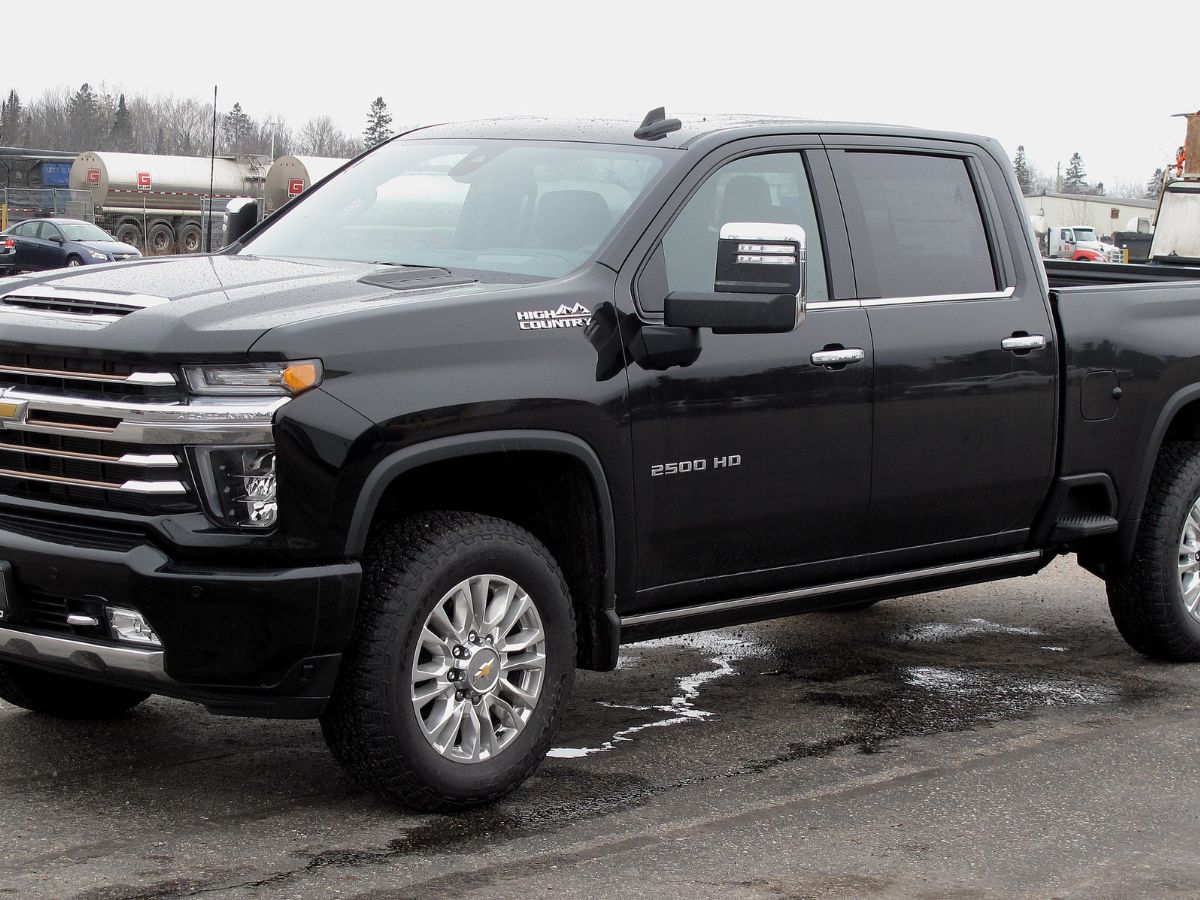In This Article Show
As an experienced mechanic with over 13 years under my belt, I’ve heard many questions from truck owners. One question that seems to pop up quite frequently is, “Can I lift my 2WD truck?” Having worked with trucks of all types, including 2WD and 4WD variants, I can provide a well-rounded perspective.
Truck lifting is a popular modification, especially among those who are into off-roading or those who want their vehicle to have a more commanding presence on the road. But when it comes to lifting a 2WD truck, the answers you might find online can range from ‘absolutely’ to ‘you’re better off not’. So, what’s the real deal?
In this blog post, we’ll explore the ins and outs of lifting a 2WD truck. We’ll delve into what it means to lift a truck, whether it’s possible to lift a 2WD truck, and how you can go about doing it.
I’ll share my experiences, along with the benefits, drawbacks, and considerations you should consider before making a decision. Let’s dive in, shall we?
What Does It Mean to Lift a Truck?
When we talk about “lifting” a truck, we’re referring to a modification process that increases the vehicle’s ride height. This modification primarily affects the distance between the truck’s chassis (the base frame) and the ground. Lifting a truck doesn’t just impact the physical appearance of the vehicle, but it also significantly alters its performance and handling characteristics.
There are a couple of ways to achieve a lift. The most common methods include suspension lifts and body lifts. A suspension lift increases the ground clearance by extending the truck’s suspension system, allowing for larger tires and enhancing off-road capability.
On the other hand, a body lift involves adding spacers under the vehicle’s body, elevating it while leaving the suspension and wheels at their original position.
But why would someone want to lift their truck? There are several reasons. Some truck owners lift their vehicles for aesthetic reasons. A lifted truck can often have a more aggressive, commanding look, which is appealing to many.
Additionally, off-road enthusiasts often lift their trucks to improve ground clearance, enabling their vehicles to tackle rough terrains more efficiently. Lastly, lifting a truck can allow for the installation of larger, more rugged tires, which can further enhance a truck’s off-road capabilities and overall appearance.
However, it’s important to remember that while lifting a truck can offer certain benefits, it also has its share of implications. We’ll delve more into this topic later in this blog. But for now, let’s get to the crux of the matter – can you lift a 2WD truck?
Can You Lift a 2WD Truck?
The simple answer is YES. Yes, you can lift a 2WD truck. Despite some misconceptions, 2WD trucks can be lifted as their 4WD counterparts. In fact, the process for lifting a 2WD truck doesn’t differ greatly from that of a 4WD one.
Many manufacturers produce lift kits specifically designed for 2WD trucks, encompassing both suspension and body lifts. These kits typically include all the components you’d need to increase your vehicle’s height, such as shock absorbers, coil springs, spacers, and more.
However, it’s crucial to note that while lifting a 2WD truck is entirely feasible, it may not always be the most practical choice depending on your intended vehicle use.
For example, if you’re an off-road enthusiast looking to improve your truck’s off-road performance, you might be better served by a 4WD truck. This is due to the 4WD’s superior traction on rough, uneven terrain, which a lift doesn’t necessarily provide for a 2WD vehicle.
On the other hand, if aesthetics or the need to fit larger tires is your primary motivation, lifting a 2WD truck can certainly achieve those goals.
Benefits and Drawbacks of Lifting a 2WD Truck
As with any significant modification, lifting a 2WD truck comes with its share of pros and cons. Understanding these can help you make an informed decision about whether this modification is right for you.
Benefits of Lifting a 2WD Truck
- Improved Appearance: One of the most immediate and noticeable benefits of lifting a truck is the change in aesthetics. A lifted truck often has a more robust and commanding presence, appealing to many truck owners.
- Larger Tires: Lifting a truck allows larger, more aggressive tires to be installed. Not only do these tires add to the vehicle’s overall look, but they can also provide improved grip on certain types of terrain.
- Better Visibility: The increased height from a lift can offer better visibility on the road, as you have a higher vantage point compared to other vehicles.

Drawbacks of Lifting a 2WD Truck
- Reduced Fuel Efficiency: The increased wind resistance from lifting a truck can lead to reduced fuel efficiency. Larger tires can also add to this decrease, as they often require more power to move.
- Potential for Increased Wear and Tear: Lifting a truck alters its suspension geometry, which can lead to increased strain on certain components, potentially causing faster wear and tear.
- Impacts on Handling and Stability: A higher center of gravity from lifting can affect your truck’s handling, making it more prone to rollovers in certain situations.
- Possible Warranty Issues: Some manufacturers may void warranties on certain components if a truck has been lifted, especially if the lift causes those parts to fail.
Remember, while lifting a 2WD truck is entirely possible, it’s important to weigh these factors and make an informed decision based on your personal needs and circumstances.
Key Considerations Before Lifting Your 2WD Truck
Before you decide to lift your 2WD truck, there are several factors you should consider. As mentioned earlier, truck lifting can significantly impact your vehicle’s performance, handling, and maintenance. Here are some key points to ponder:
1. Purpose
Why are you lifting your truck? If it’s for aesthetic reasons or to fit larger tires, lifting a 2WD truck can be a great option. However, if you’re looking for improved off-road capabilities, you might want to consider a 4WD truck. While a lift can improve ground clearance, it won’t provide the enhanced traction that a 4WD system offers.
2. Cost
Lifting a truck can be a costly endeavor. Not only do you have to account for the cost of the lift kit and its installation, but you might also need to consider larger tires and potential increases in maintenance expenses.
3. Maintenance
As mentioned before, a lift can potentially increase wear and tear on your vehicle’s components. This can lead to more frequent maintenance and higher long-term costs. It’s crucial to consider whether you’re prepared to handle these additional expenses.
4. Safety
Lifting a truck can impact its stability due to a higher center of gravity, increasing the risk of rollovers. Additionally, the alteration to the suspension system can change the handling characteristics, something you’ll need to adapt to.
5. Vehicle Warranty
If your truck is under warranty, you’ll want to check with the manufacturer or dealer to see if lifting could affect this coverage. Some companies may void the warranty if alterations lead to issues with the vehicle.
Before making any major modifications to your vehicle, it’s always wise to do thorough research and consider all the factors involved. Lifting a 2WD truck can be an exciting project, but it should be carefully considered.
Wrapping it up
Deciding to lift your 2WD truck is a personal choice with aesthetic and practical implications. It’s not a decision to take lightly, as it affects not only the look of your truck, but also its performance, handling, and potentially even its warranty.
Remember, lifting a truck can make it look more commanding and accommodate larger tires, but it also has its drawbacks like decreased fuel efficiency, increased wear and tear, and potential impacts on safety.
At the end of the day, the decision to lift your 2WD truck should be based on careful consideration of the benefits, drawbacks, and your individual needs and circumstances. If you choose to go forward with this modification, consult a professional or experienced mechanic to ensure it’s done correctly and safely.











